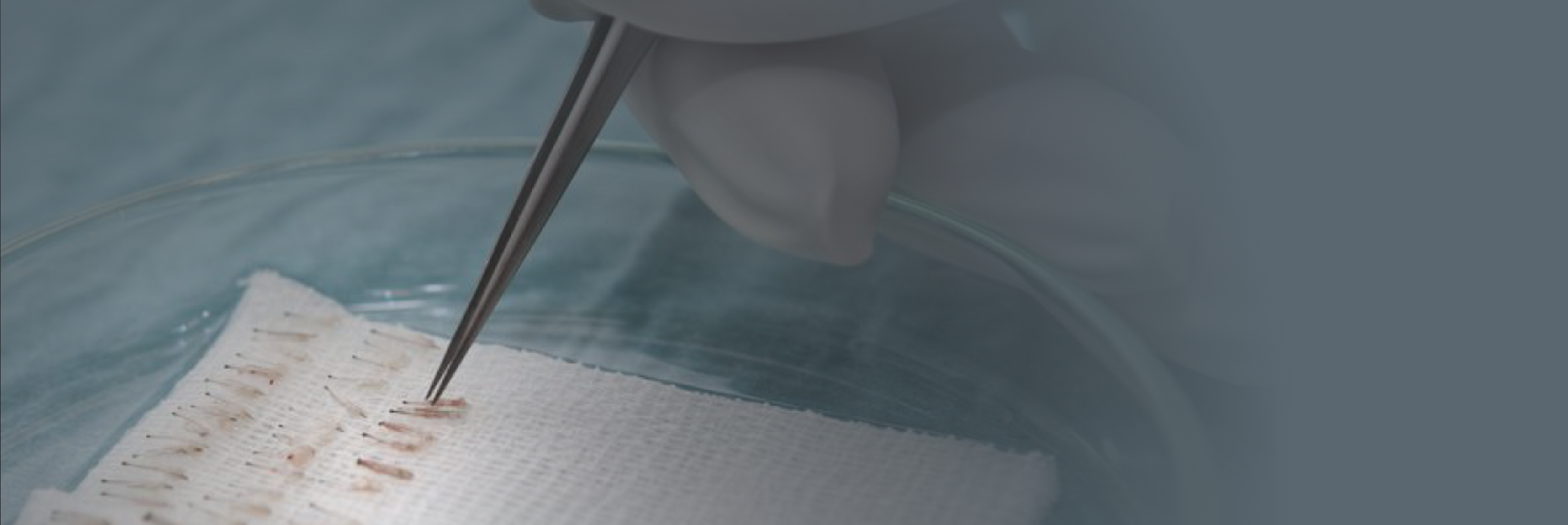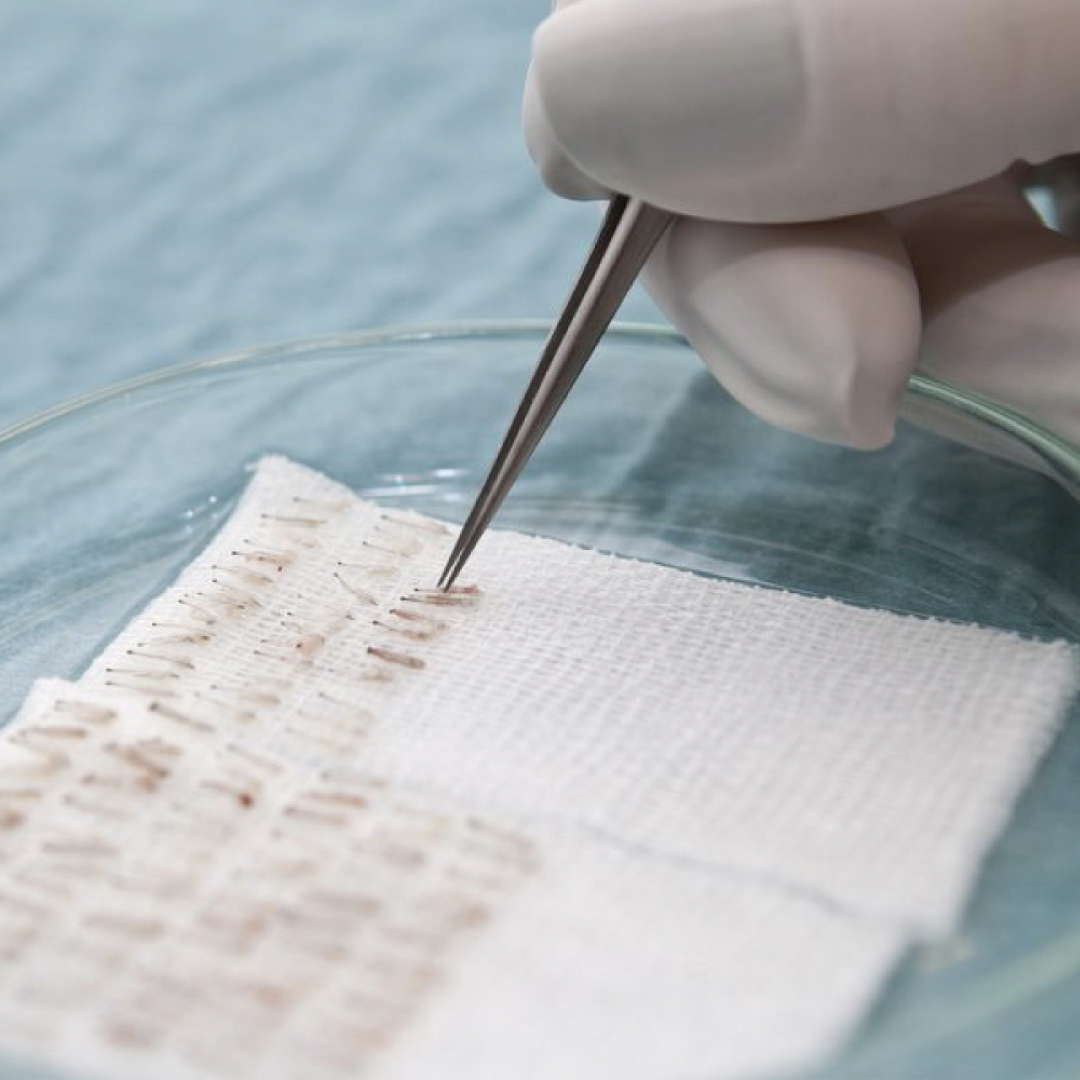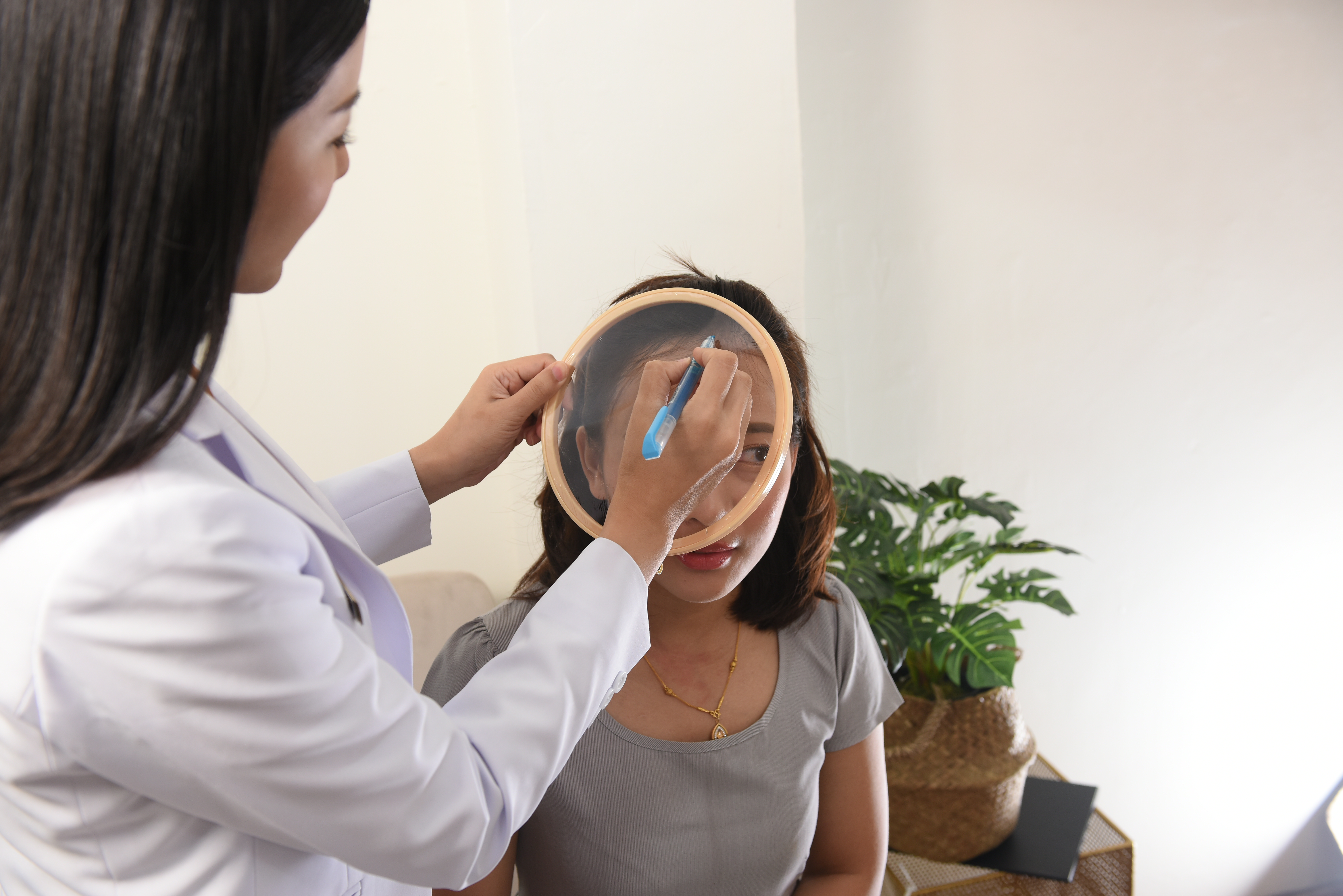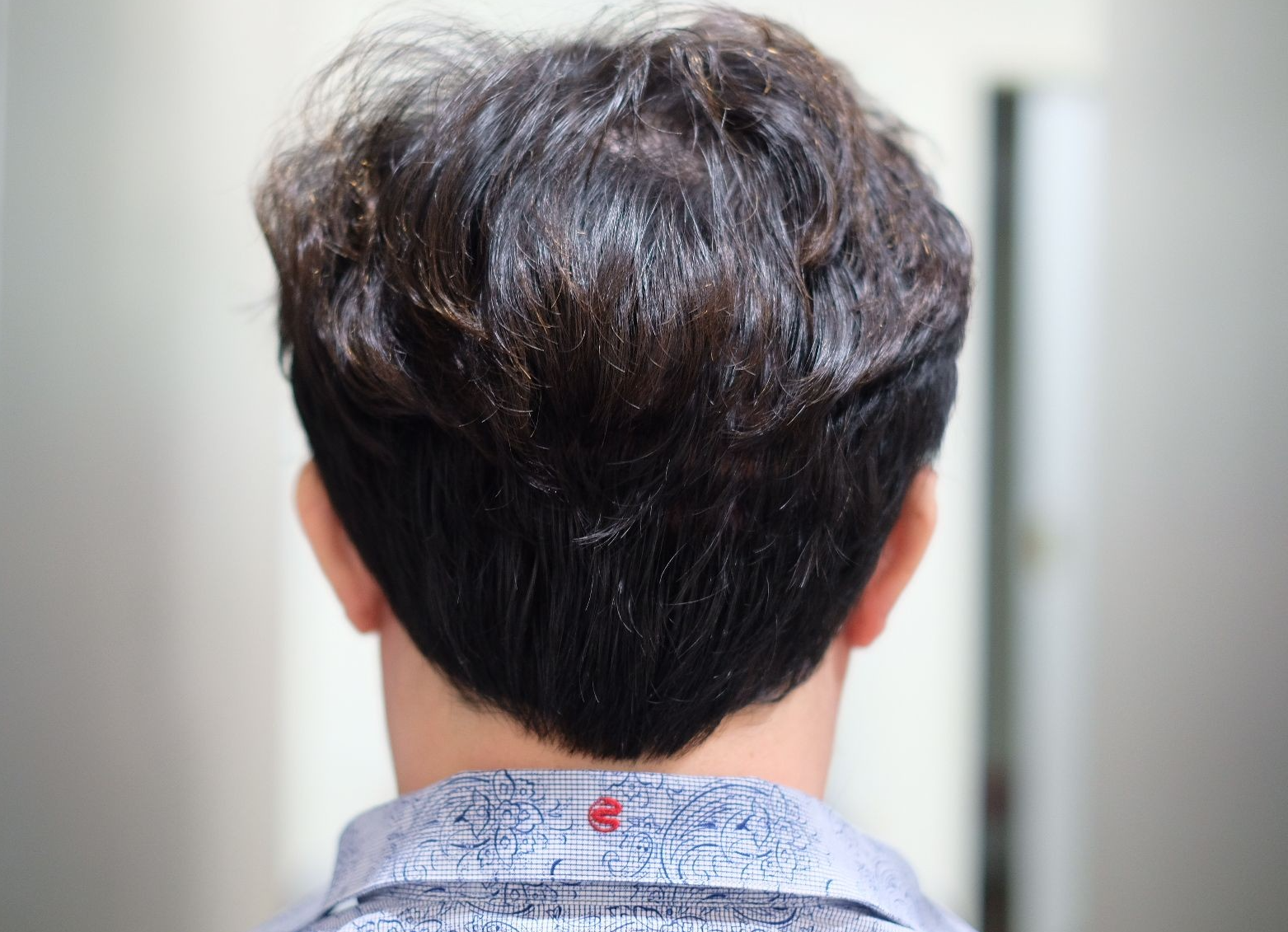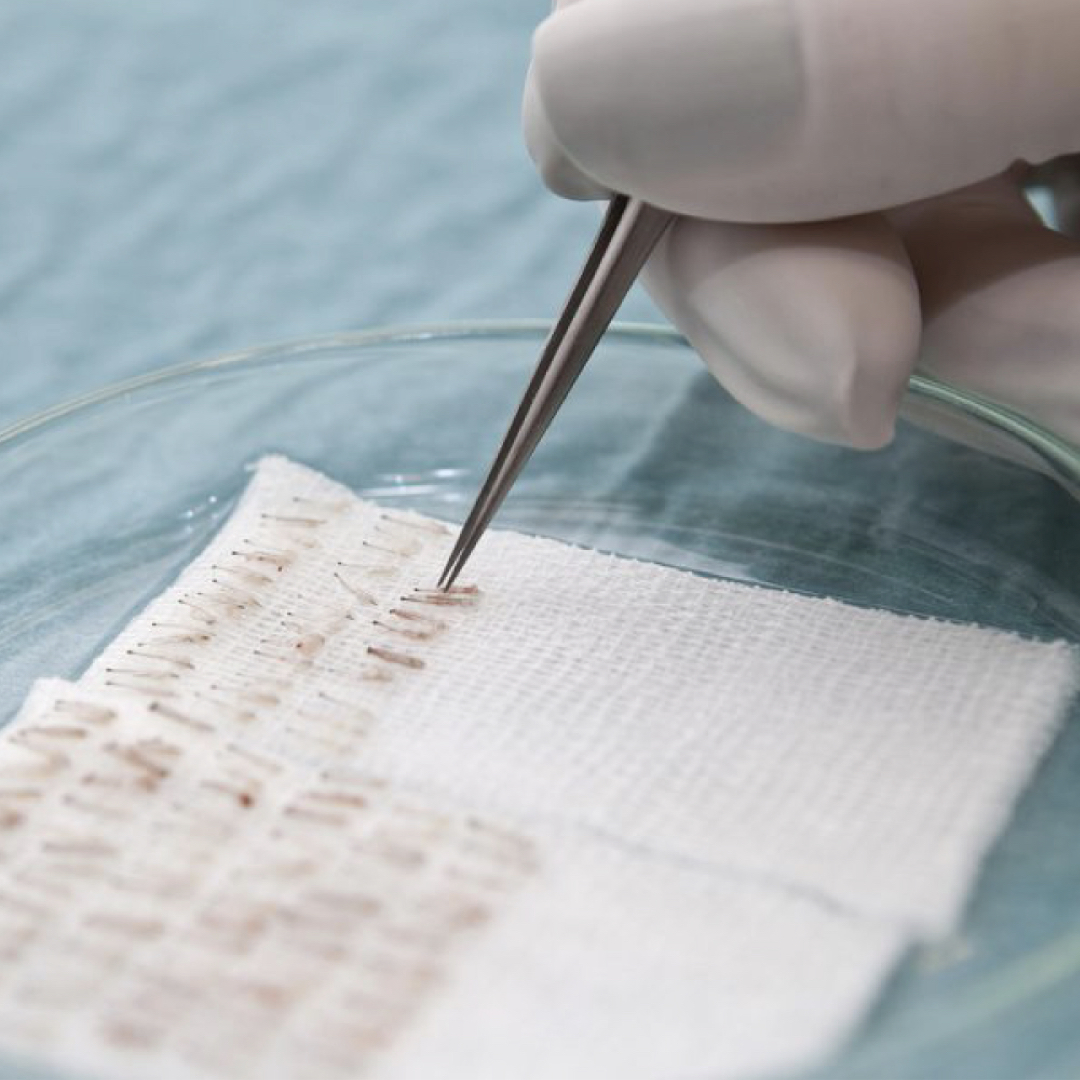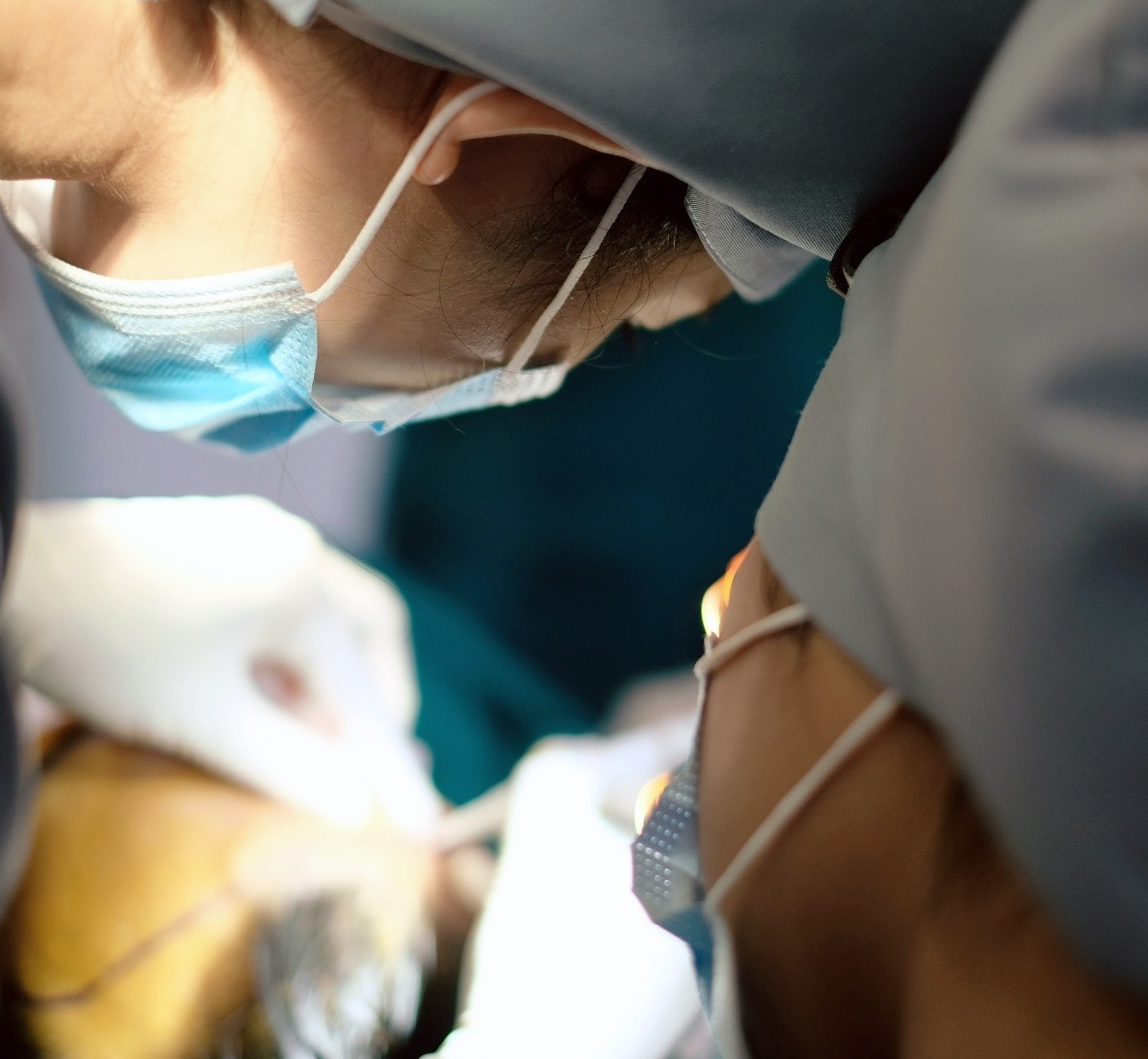Next, the recipient area(s) will be injected with local anesthetic.
The surgeon uses the implanter needle to make a hole appropriately. Then hair grafts will be implanted on the recipient area at the proper depth. Micrografting also helps in creating the natural hair direction, blending in with the existing native hair. Once completed, the medical assistant, then, clean and cover the wound, and provide the patient a hood to protect the newly transplanted area. The patient can gently wash his/her hair the next morning. After the procedure is completed, the follow-up visit to check up on the transplantation results will be scheduled (additional hair treatments will be given to stimulate hair growth and prevent potential fall-out).
